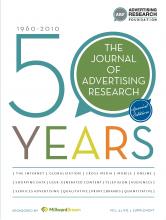Click on the PDF link for the complete article.
ABSTRACT
Mobile advertising is a young, fast-growing part of marketing communications. Initially over-hyped, it is now starting to take off for real. What can we learn about it from the early academic research? Initial studies on the medium focused on “push” advertising using SMS—an issue complicated by issues of the constraints of consumer permission, acceptance and trust. Results have been mixed but suggest acceptance, especially by younger consumers, of well-executed SMS-based push advertising if the source is trusted, permission has been given, and the messages are relevant and/or entertaining. Researchers have started to broaden the agenda to cover
push mobile advertising beyond SMS (e.g., using still or moving pictures and sound) and
mobile as a “pull” or response medium (e.g., in combination with traditional media and promotions).
For future research, emerging topics include device-readable printed codes in print ads and packaging; mobile search; location-based mobile communications and promotions; branded mobile entertainment, especially games; and user-generated mobile content and social networking. Many of these reflect the growth of the mobile Internet since the 2007 launch of Apple's iPhone. Finally—perhaps uniquely within academic research in marketing—most mobile advertising research has been conducted in Asia and Europe, not the United States. The rapid growth of the mobile Internet will, the authors hope, lead to more U.S. research in this increasingly important area.
- Copyright© 2011 ARF. All rights reserved.
ARF MEMBERS
If you are a member of the Advertising Research Foundation, you can access the content by logging in here
Log In
Pay Per Article - You may access this article (from the computer you are currently using) for 30 days for US$20.00
Regain Access - You can regain access to a recent Pay per Article purchase if your access period has not yet expired.





